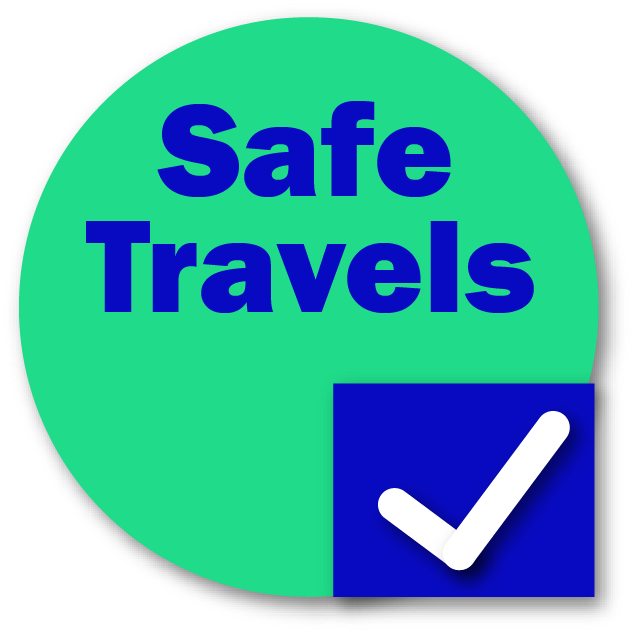

 Wildlife & Nature
Wildlife & Nature



 trip overview
included
trip highlights
activities
accommodations
itinerary
packing list
faq
essential trip information
best season to travel
price & availability
Reserve Online
trip overview
included
trip highlights
activities
accommodations
itinerary
packing list
faq
essential trip information
best season to travel
price & availability
Reserve Online
 CREATING AUTHENTIC TOURS IN PERU
CREATING AUTHENTIC TOURS IN PERU

The Tambopata Amazon Tours is part of the mighty Amazon basin. Amazon is one of the longest rivers in the world and runs through many countries in South America. There are two main jungle areas in Peru that you can visit, both equally beautiful and with many great attractions to experience. The first area is the area of Puerto Maldonado and the Madre de Dios River. The area is part of the great Tambopata National Reserve; The reserve covers around 274,690 hectares stretching from the Andes Mountains to Bolivia and is close to the Manu National Park and the Madidi National Park.
According to current estimates by conservationists, the Tambopata Amazon is home to 160 species of mammals and at least 650 species of birds, one of the most surprising Amazon facts. The area is home to 1200 butterfly species, over 150 species of amphibians and reptiles and more than 100 fish species, and over 10000 plant varieties. A highlight of the Tambopata Amazon Rainforest is the world’s largest known mineral clay lick. This is where hundreds of parrots and macaws congregate daily to ingest the detoxifying clay. The reserve contains the largest known clay lick in the world as well as the highest concentration of clay licks anywhere. Up to 17 different parrot species visit the licks daily.
This trip is rated as easy. Participants should enjoy short walks on trails full of moisture, mud and heat, in the wild jungles of South America. In many of the circuits that our guides will take you are near the hostel, there will be days when we will have to walk with some rain. Weather conditions and remote locations are a combined physical stress that can make this activity a bit more challenging than it normally would be.
Prepare to face large rivers, in small motorboats and taste unique food from the region. Generally, it is not necessary to be a tourist with experience in hiking, since the attraction is about 500 meters above sea level. The terrain is not very steep. The probability of seeing wildlife is very varied, since there are days when we will have more opportunities than others; Remember that this tour goes to a wild place where animals are not in the same place. The best recommendation is to have a lot of patience and teamwork with the route guide.
Inkaterra Hacienda Concepcion (2 nights):
Arrive into Puerto Maldonado, coined the Capital of Biodiversity. Begin your Amazon adventure with a 25-minute boat ride navigating the clay-coloured Madre de Dios River to reach Inkaterra Hacienda Concepcion lodge. Settle into your stylish stilted wooden cabaña or room on our private eco-reserve and then head to the palm-thatched Casa Grande dining room for a buffet lunch before exploring the rainforest on foot, starting from the Eco Center. Take a walk along the Concepcion Trails, winding through the property’s nature trails for an immersive introduction to the intricate ecosystems of the Amazon basin. Backed by the protected Tambopata National Reserve and built on the grounds of a former cacao and rubber plantation, Inkaterra Hacienda Concepcion harbours primary and secondary rainforest inhabited with exotic wildlife and tropical plants. At dusk witness the enchanting transformation of the rainforest from a diurnal to a nocturnal environment on a guided Twilight River boat ride, as animals and birds of the daytime give way to species specially adapted to the shadows of the night. See if you can spot caimans lurking on the riverbanks and stars of the southern hemisphere. In the evening enjoy à-la-carte dining, drawing on local Amazon ingredients for inspiration. Retreat to your cabaña or room to listen to the curious calls and croaks of the rainforest at night.
Optionally join us in the early hours, with buffet breakfast served from 05:30. Visit Lake Sandoval, a glassy, ox-bow lake located inside the protected Tambopata National Reserve, reached via a sun-dappled rainforest trail. Board a dug-out wooden canoe to quietly paddle through a stream and glide onto Lake Sandoval, flanked by picture-perfect palms. This lake is home to many species of birds, the endangered giant river otter, red howler monkeys, red-bellied macaws, anacondas, side-neck turtles, black caimans amongst others. Return to Inkaterra Hacienda Concepcion in time for lunch. In the afternoon we recommend climbing the exhilarating Inkaterra Canopy Walkway. The Canopy Walkway is a sophisticated and safe 344 meters (1,135 feet) network of seven ecologically constructed hanging suspension bridges, strung between eight treetop observation platforms above the forest floor. This is an unforgettable opportunity to observe the rainforest from the rooftop and gain a sense of its size. Ascend the first vertiginous tower 38 metres (124 feet) above ground, keeping an eye out for bright toucans, woodpeckers, trogons, monkeys and the three-toed sloth. It’s possible to extend your elevated stay with sunset drinks from atop a tower – or spend a once-in-a-lifetime night in a specially-designed treehouse cabin with surprising comforts (additional cost applies). Back at the lodge, you can venture out onto the Hidden Forest excursion. Armed with flashlights, as your senses heighten to the movements and sounds in the undergrowth of the forest, keep an eye for species that only emerge during night time. On the other hand if you wish to rest, book yourself an indulgent therapy at our Nua spa, built in the middle of the rainforest . À-la-carte dinner is served from 19:00.
Enjoy your last morning waking to the sounds of the rainforest as parakeets chatter away in the trees and monkeys swing through the treetops. Breakfast is served in Casa Grande with check-out at 10:00. Depending on the time of your departure flight, lunch can also be arranged (additional cost applies). Embark your ready-waiting motorized wooden boat for the 25-minute return trip along the Madre de Dios River until arriving at the airport.
Please note that activities and excursions are subject to change depending on weather conditions at the time of your visit.
The preparation for your stay is when the emotion and anticipation really begins. But if you never have time spent in the Amazon Rainforest, you may not be sure what to pack. We have prepared this list to help with some guidelines and suggestions. This list is only intended to provide ideas and suggestions about what you may want to bring and nothing on this list is mandatory.
The Amazon Rainforest is close to the equator and the average annual temperature is approx. 26 °C (80° Fahrenheit). Due to the fact that the weather changes very rapidly, it’s crucial to be well prepared for your Amazon tour. A trip to the Amazon rainforest is the trip of a lifetime. It’s the kind of adventure that most people only dream about. The Amazon is known as “the greatest expression of life on Earth”.
Keep your luggage to a comfortable minimum. Number one on the list is to bring a valid passport! Safari quick-dry clothes or drip-dry cotton—including a long-sleeved shirt, long pants, and sweater or pull-over. Also pack hiking shoes or sneakers with good treads, (the paths of the jungle are often with mud, so shoes get wet and muddy), raincoat or plastic poncho. Include insect repellent, medications, toiletries, sunglasses, sunscreen, a wide-brimmed hat, binoculars, sandals, and a bathing suit. It’s wise to take extra clothes and extra socks, as clothing does not dry in the humid rainforest climate.
For an Amazon adventure trip everyone should pack accordingly. Except for the occasional internal flight, we’ll be taking canoes, kayaks, jeeps, vans and our own feet between destinations. A sturdy internal frame backpack is convenient for this form of travel; a strong duffel bag works well, and some people get by fine with a rolling suitcase (although we don’t really recommend the latter). Remember, we may have to carry our bags short distances and if you can put everything on your back you’ll be happiest! Besides a pack or duffel bag, a small day pack is advised.
 warm jackets
warm jackets
 Hydration bladder
Hydration bladder
 wool socks
wool socks
 camera
camera
 scarf
scarf
 first aid kit
first aid kit
 hiking shoes
hiking shoes
 Dry bags
Dry bags
 Trekking Poles
Trekking Poles
 sun cream
sun cream
 Snack
Snack
 sun hat
sun hat
 bathing suite
bathing suite
 rain coat
rain coat
 Sandals
Sandals
 insect repellent
insect repellent
 Passport
Passport
 Down Jackets
Down Jackets
 toilet paper
toilet paper
 daypack
daypack
 Wool cap
Wool cap
 head lamp
head lamp
 gloves
gloves
 sun glasses
sun glasses
 cap
cap
 extra cash
extra cash
 Trekking pants
Trekking pants
Are you looking for some answers to your questions about Tambopata Amazon Rainforest Tours? Maybe looking for information regarding our Tambopata Jungle tours, how to prepare for your Amazon trip or if the weather will affect your tour?
Here we will answer the most common questions we have been asked by our visitors. If you don’t find your question answered here please contact us and we will do our best to help you out.
The Tambopata National Reserve is one of the last easily accessible virgin tropical rainforests in the world. The Reserve, a 274,690-hectare area (678,774-acre), offers a wealth of biodiversity, as well as magnificent natural landscapes. Puerto Maldonado, known as the “Capital of Biodiversity,” is the largest city of the Tambopata region. Overlooking the confluence of the Tambopata and Madre de Dios Rivers, Puerto Maldonado is 400 meters (1,312 feet) above sea level, 650 km (404 miles) from Cusco, and 15 km (9 miles) upriver from the Inkaterra lodge.
The lowland rainforests of Tambopata lie far enough south of the Equator to provide a cooler, drier winter season between May and October. The general weather conditions are warm and humid. In Tambopata, the average daytime high temperature is between 78F and 93F (24C and 31C) The average nighttime low is between 66F and 78 F (20C and 24C). Cold Fronts – May through September Cold fronts from Argentina can sweep into southwestern Amazonia and push daytime highs down to 50° F (9° C) and the nighttime lows to 43° F (5° C). Thus, during that season always be potentially prepared for cold and drizzle. Rainy Months – November through April Be prepared for heavy rain that can continue for hours or days. Around 80% of the annual average 3000 mm rainfall occurs during this season.
Daily commercial flights connect Puerto Maldonado to Lima and Cusco.
Puerto Maldonado, is in the Southern Peruvian rainforest near the Bolivian and Brazilian borders, is the gateway to one of the world’s most remote and extraordinary tropical environments.
Your journey will take you to the heart of the Tambopata National Reserve,where you will experience magnificent beauty in the sounds, scents, colors and solitude of the rainforest.
You will find yourself surrounded by a vast environment, connecting with nature in an entirely new way. As this may be your first rainforest experience, we have prepared a guide to help you enjoy your trip to the fullest. Please take time to review it to enjoy an amazing Amazon experience.
You will have a pre-departure briefing at your hotel the day of your arrival or one day before at 6:00 pm, we will send you one of our tour guides who will explain you all the manu jungle tour program day by day, also he will answer any remaining questions about the tour, then you can finalize the payments of your balance.
300 to 400 soles should be taken for additional purchases on the tour such as handicrafts, soft drinks, moisturizers, beers and tips for the staff (motorcyclist, crewman, cooks and guides).
On our Tambopata Jungle the maximum group size is 10 people per guide. This way everybody can hear what the guide says and the group is not too big to observe animals. If there are 8 to 12 participants on a tour we take one more guide to divide the group in two while walking on the trails, but you may be sharing the bus and/ or boat. If there are more than 12 participants on the same tour we split in 2 groups, each with its own guide and boat.
Our tour guides are very well prepared, they use all of their senses listening for small sounds like the breaking of a branch or fruit falling from the canopy, sniffing for animal odors, scanning the leaves above and below for motion. With this heightened attention and care to make little noise, the chances of observing large and small creatures is greatly increased.
The Tambopata Jungle has the greatest collection of life on earth, and so understandably, many visitors to Tambopata Jungle expect to see lots of mammals. But it should be kept in mind that the story of Tambopata Jungle is that it has high diversity, but low density. So on our trip we will see lots of kinds of creatures but not very many of each kind. But the beauty of this place is how the flora and fauna have evolved the wonderful and bizarre adaptations to thrive in this wilderness. With this perspective, travelers can directly experience and appreciate the infinite variability.
The dry season is a good season to see the birds. The most likely reason for them to come together and eat the clay is because at certain times of the year there are hardly any fruits available for them, just seeds. Seeds in general have a toxic layer, exactly to prevent animals eating them. If the macaws eat them anyway, they have a build up of poison in their stomach. To neutralize the acids that the poison produces in their stomachs, they eat the clay. In the rainy season up until the beginning of the dry season (May) there are many fruits. So the macaws eat fewer seeds and more non-toxic fruits and feel less necessity to eat the clay. Usually it means there are fewer macaws present in the beginning of the dry season. In the middle of the dry season there may be about 100 to 150 macaws visiting the clay lick in one morning, whereas there may only be 10 to 50 at the end of the rainy season/beginning of the dry season.
When is the dry season?: Although it can rain at any time of the year, the Tambopata region tends to be drier from May until October. The rains start up in earnest in November and continue until April with therainiest months usually being November and December. Upsides to visiting during the dry season are trails that aren’t as muddy, little chance of activities being affected by rain, and more macaws and parrots on the clay licks. Downsides to visiting during the dry season are hotter weather, less bird activity on sunny days, more difficulty in finding amphibians, and more travel time on rivers due to low water levels.
Why visit Tambopata during the wet season?: Although you can expect a lot of rain, there will probably be fewer fellow ecotourists (if you like a lot of extra elbow room), it usually rains in the afternoon, it tends to be a bit cooler, and there may be higher bird activity on account of the cloudy weather. The ponds and temporal wetlands that form at this time of the year in the rainforest can also make it easier to find reptiles and amphibians.
When will I see the most animals?: In all honesty, no month is particularly better to see animals than any other. While more parrots and macaws tend to visit the clay lick during the dry season, other animals are encountered with the same frequency no matter what the time of the year. A much bigger factor that comes into play for seeing Amazonian wildlife is the guide’s level of experience and training.
When is the best time to see monkeys?: If you visit lodges such as the Tambopata Research Center, Refugio Amazonas, or Posada Amazonas, you have a very good chance of seeing several monkey species throughout the year. The rollicking calls of Dusky Titis echo from vine tangles, Red Howler Monkeys call from the canopy, and troops of Squirrel Monkeys roam through second-growth near oxbow lakes. Black Spider Monkeys may be a bit easier to find during the wet season because it’s usually easier to locate the fruiting trees they feed on but a good guide will increase your chances of seeing them no matter what the time of the year.
Tambopata Jungle tours can be done with normal fitness by people of all age groups. You should be able to walk medium distances (for about 2 – 3 hours) and on often uneven surfaces.
If you are travelling with children, please let us know in advance for further recommendations, depending on the age of your children.
We don’t have to cover big distances on the walks; we will often walk slowly or stop to observe animals and plants on the way. Sometimes we need to listen, wait and have patience. You only need to bring a day pack on the walks. Night walks are optional and usually take about 1 hour. You are not expected to carry your luggage to the lodge, but help is appreciated.
Due to the humidity and warm temperatures some people may feel a bit weak or faint, but there normally is a short ‘siesta’ at midday and you have the possibility to stay at the lodge instead of participating in a walk. In the rain forest it ‘s important to drink a lot.
A rainforest tour is not a ‘comfort tour’, but if you bring appropriate gear (please see our packing list) you will have an incomparable experience.
Please bring a maximum of 23 kg of luggage per person on your Tambopata Jungle Tour. Especially during the dry season (approx. from June to September) the water levels of the rivers are low; therefore we try to reduce the weight of our boat to make headway better and faster. We recommend to bring a waterproof bag or rucksack for the amazon jungle tours.
During the Tambopata Jungle Tour you can store the rest of your luggage at your hotel in Cusco. In case you have special photo equipment with a considerable weight please let us know in advance.
Our boats are 15 and 16 m long with Yamaha outboard motors. They have wooden seats with cushions and backrests as well as a roof. There are life vests for all passengers. When travelling on the river in the rain you may get wet, so you should have your rain gear at hand. Our boat staff will also provide plastic covers to protect you if it rains. There is no toilet on the boat; please just let your guide know if you need to use the bathroom, so he can stop the boat. And you can make your needs on the banks of the river
Binoculars are essential to a better appreciation and recognition birds and other animals. Binocular and sleeping bag both can be rented in Cusco.
Binoculars are essential for Tambopata Jungle tour: to spot animals and get a closer view of them.
8 x 40, 10 x 40 or 10 x 42 magnifications are recommended.
Quality binoculars (Zeiss, Eschenbach, Leica, Minox und Nikon brands)
“The Amazon is definitely family friendly but I would not be inclined to take kids under about 6. Maybe not even younger kids aged 6-8, you wouldn’t want to put them on those very long journeys, but some of the lodges are better set up for families. I went to a lodge in the Tambopata Reserve and we had a fantastic time because it’s not that far away, it’s not right on the river bank, they have very good dedicated guides for kids and trails set up for kids, they provide welly boots for kids and they’ve got a games area for kids.”
The Amazon Rainforest tours are an excellent choice for kids who are interested in wildlife and the outdoors. Spotting colorful macaws flying overhead, listening to howler monkeys roar in the trees, and climbing into the rainforest canopy inspire the wonder in all of us and can be particularly fascinating for children. Most lodges do not have electricity so they are not a good choice for kids who rely on television and video games for entertainment. Some lodges require much longer transfer times to reach or are particularly remote and rustic. Ask your trip coordinator for recommendations. Some vaccinations and malaria preventatives are also recommended for these tours. Some of these cannot be given to children under a certain age/ weight, though alternatives are generally available. Ask your pediatrician for advice before booking your tour.
The food at all of the Amazon lodges is excellent, fresh, and authentic. Generally, the lodges seek to provide a mixture of local and international cuisine. Jungle fruits, vegetables, and juices provide a uniquely fresh flair that is unmatched in more temperate climates. Although menu choices are limited at the most remote lodges, all can accommodate vegetarians or other common dietary preferences if sufficient notice is provided.
It will depend on exactly where in the Amazon you visit, as different countries will have different types. Some trips may cross borders, so double check with your Trip Planners to confirm exactly which countries you’re visiting and what their power requirements are. Generally, you can expect the following:
Peru uses 220 volt, 60 cycle electricity. Travelers will require a voltage converter for 110 volt devices. Plugs are typically the 2 pronged flat type found in the US, though some facilities have been noted to use the 2 rounded prongs instead.
Like all of our tour leaders, the Amazon guides are exceptional! They are fluent in English (some tours also have a second native guide who may only speak limited English) and generally speak the local jungle language(s) and Spanish as well. They are trained in biology or ecology and specialize in jungle guiding, giving them a unique ability to spot elusive wildlife. Some lodges, employ both a native guide from the local area and a biologist guide with formal training.
We have had travelers of nearly every age on our Amazon tours. These trips commonly attract multi-generational families as well as young honeymooners or adventurous single travelers. Travelers of any age can likely find an Amazon option where they will fit right in.
Absolutely! We arrange small group tours (6 or less) so these tours are a great choice for single travelers interested in getting to know a small group of other travelers. Some lodges are easier to coordinate for single travelers than others.
Tour rates do not include international flights. We find that it is usually less expensive for travelers to book these separately and this also allows you the flexibility to choose the schedule and routing that is most convenient for you. You are welcome to book these on your own, or we can certainly help you arrange these flights with an airfare consolidator who specializes in South America flights.
Tips are not required on any of our tours. However, it is customary in Latin America to offer a small tip for exceptional service. Tipping amounts vary widely, though some travelers report that $2-$10/ day for your guide is common. Other travelers opt to bring small gifts from their home to give to service providers along the way.
The short answer is yes. Especially if you are a nature lover, the Amazon is one of the most fascinating places in the world. It is home to at least 10 percent of the world’s biodiversity. In fact its residents include 40,000 plant species (16,000 types of trees) and more than 5,000 animal species. However, if you are only in Peru to see ancient ruins and don’t really like being immersed in nature – it’s probably not the place for you.
The Amazon Rainforest is between 3-3.2 million square mi (7.8-8.2 million square km) in size. It is the largest rainforest in the world, and 80 percent of its land is covered by forests. To put into perspective, the physical size of the Amazon is roughly equivalent to the size of the entire lower 48 states of the United States.
13 percent of the entire Amazon rainforest is located in Peru. 60 percent of the Amazon rainforest is in Brazil, and 10 percent in Colombia. That being said, 60 percent of Peru is covered in the Amazon rainforest.
Yes, the Peruvian Amazon is a safe tourist destination; but like anywhere you should practice precaution. Stay with your tour group at all times and wander only within the property of your lodge in your free time. Do not join tours from the streets or follow people/guides you don’t know. Also, the rainforest is full of wild animals, so be sure to watch your step and be mindful of where you place your hands.
No, unfortunately, we do not have Kosher certified food in Puerto Maldonado, the closest town from where we get our supplies, like fresh produce, meat and fish, and dairy products.
Can we get fresh produce, grains and fruits?
Yes, we can get vegetables such as tomatoes, cucumbers, sweet potatoes, broccoli, zucchini, eggplant, cabbage, lettuce and spinach. We can get uncut and unpeeled, fruits such as apples, pineapples, papaya, tangerines, oranges, bananas, and watermelon. And grains like rice, wheat, lentils, yellow beans, split peas, garbanzo beans and quinoa. These will make a great salad; please feel free to ask our cook the combination you would like for a fresh salad. Baked potatoes and sweet potatoes are popular.
Can we get scaled fish like halibut, salmon, sea bass or flounder?
No, the fish we get comes from local fish farms and it is a large catfish from the region, which comes already filleted and packed. The knives and procedures used to cut the fish are not Kosher certified.
Can we get packed cereal, granola bars or bread for breakfast?
Yes, we can get these packed products for breakfast and/or snacks. We do prepare fresh bread every morning, you are welcome to see the process and decide if you would like to try it.
Can we get certified dairy products?
We cannot get Kosher certified products like milk, butter or cheese. Can we get fresh eggs? Yes, we can get local fresh eggs. Do we have new pots and utensils to cook the meals? We do not have new utensils. We can buy them for you and your group. The fee per person is US$70. You are welcome to bring your own utensils and the cook will use them and return them when you depart.
In case of emergencies we have a first aid kit that is equipped to deal with most cases that may reasonably arise in the area. Our guides are all certified by the Red Cross, which means they are prepared to deal with foreseeable emergencies (broken bones or snake bites, for example) but not complex emergencies (such as appendicitis). For snake bites, unheard of at Tambopata so far, we have extractors and an anti-venom at the lodges. In case of evacuation, we need to travel by boat to Puerto Maldonado. During the day, evacuations take about 20% less time than our regular boats. During the night, evacuations take about 30% more. In Puerto Maldonado, there is access to a state clinic.
The lodge is run mainly on propane. You can charge batteries a few hours a day in the dining room area.
Communications are powered by solar energy and there is wireless internet available at night. We use LED bulbs in public areas at night.
We have electricity three times per day: From 6hrs to 8hrs – From 12hrs to 14hrs – From 17hrs to 22hrs (Referential time).
We provide natural spring water 24 hours per day. Please use the water wisely. We advise you not to drink the water from the river, lake, or any of the taps. Consumable water can be found throughout the lodge from many dispensers and pitchers as well as a variety of other beverages available. All the water that the lodge provides is purified with an ozone treatment. We also suggest that you use this water to brush your teeth. Please turn off the water flow while lathering and soaping up to reduce unnecessary water usage.
Our open and spacious rooms offer lots of natural light and fresh air while providing safe but close contact with the forest environment. Our three-wall rooms allow you to connect with nature, but no worries nothing will enter into your room. The lodge and rooms are 3 meters away from the forest and 1 meter and half above the ground. Each room is also equipped with private bathrooms for your convenience. The use of mosquito netting on each bed is strongly recommended to ensure your comfort and safety. We try to be as eco-friendly as possible so we request that you only change towels when really needed. After 9:30 pm we kindly ask that you lower your voices to allow all guests to enjoy the sounds of the forest at night.
We ask you to keep your valuable belongings and documents in the safe. Do not leave them valuables in plain view. Equally, if you have food or candies please keep them in the safe. Do not leave them outside. This way you will avoid attracting insects and other animals. Ask the lodge manager or guide to inform you about the proper use of the safety box.
According to our environmental policies, we only use Brazil nut biodegradable soap and shampoo which you will find in the bathroom If you are allergic to nuts, please let us know and we will provide you with a lemongrass soap. We wash the towels and bed sheets using biodegradable detergent and we clean the bathrooms with biodegradable products as well.
Thank God we do not have a telephone available in our lodge! In case of emergency, we could get cell phone signal, only at the reception of the Lodges.
This service is only available on sunny days. Please ask for the rate at the lodge. Clothes are hand-washed using White Swipe biodegradable soap and are sun dried in order to protect the environment.
Smoking is allowed in the lobby and bar except at mealtimes. Please do not smoke in your room, the dining rooms, boats, or during activities.
Breakfast time depends on your scheduled activity but starts from 4:30am onwards. Lunch is served at 1:00pm and dinner is served at 7:00pm. Please let us know if you are vegetarian or have any special dietary needs. We do offer a special menu for children.
The Amazon rainforest is a thriving hub of biodiversity but, to see it, you’re going to have to go in deep. Local guides, their senses attuned to the shadows in the trees and the rustle of leaves, will spot secretive animals with ease, especially in the most remote and uninhabited regions of the rainforest. Read on for our guide to Amazon wildlife and where to see it.
It might seem odd that the place with the most biodiversity on the planet isn’t necessarily the best for wildlife watching. There are too many trees and so many places to hide. Our holiday specialists, points out that more than the wildlife, “you go for that sense of being in the Amazon. Just being in that massive rainforest and feeling really really small, it’s quite humbling.”
You’re more likely to hear the Amazon’s inhabitant than see them – the rainforest is surprisingly loud. Like a sudden onset of tinnitus, the constant buzz of millions of insects will be the backing track throughout your holiday here. Howler monkeys can be heard from three miles away and the bare-throated bellbird and screaming piha are two tiny birds with hundred-decibel lungs. Hordes of peccaries (small pigs) can sometimes be heard stampeding through the undergrowth in groups a hundred strong.
Living within the thriving ecosystems of Manu are many species flying, fluttering, and climbing overhead. As the varied landscape offers a unique combination of flora, so does it provide a range of fauna to be witnessed. So far, this includes 222 species of mammals, 99 species of reptiles, 140 species of amphibians, 1,000 species of birds, 210 species of fish, and over 2,300 insects (not including the numerous species that remained unnamed).
Some of the most impressive of the rich and diverse wildlife of Tambopata Jungle are the Peruvian jaguar, macaws, the puma, the ocelot, the giant otter, the giant anteater, the giant armadillo, the Brazilian tapir, a variety of sloths, marsh deer (especially unique as it is actually a savanna animal), and fourteen different species of monkeys.
Monkeys are one of the more common sights for visitors, known for playing in the trees and watching the activity below. Guests can also expect an array of birds and butterflies constantly swooping through the rainforest canopy, and sightings of several unique reptiles and insects are never far. Keep your eyes peeled for one of the rarer jungle mammals, and perhaps leave with the sighting of a lifetime.
After you book your tour, you will receive a detailed packing list with your departure packet. In general, light, synthetic, breathable, quick-drying fabrics provide the most comfort. Long sleeves, a sun hat and long pants are advised to protect from bugs and sun. The lightweight convertible pants that zip off into shorts are a great option as you can convert them to shorts during the heat of the day and back to full length when the bugs are at their worst in the evening. Unlike most destinations, you will probably want to plan a separate outfit for each day. Clothes dry very slowly in the jungle and you may not want to re-wear the perspiration soaked shirt of the previous day! Make sure to bring plenty of sunscreen and insect repellent, as well as any personal toiletries that you need as it’s difficult to find replacements at these remote lodges.
The preparation for your stay is when the emotion and anticipation really begins. But if you never have time spent in the Tambopata jungle, you may not be sure what to pack. We have prepared this list to help with some guidelines and suggestions. This list is only intended to provide ideas and suggestions about what you may want to bring and nothing on this list is mandatory.
OFFICIAL PAPERS:
CLOTHING:
ELECTRONICS:
During limited hours there is a 220 V current available to charge the batteries during certain times of the day. Most current electronic components (for example, laptops, cameras, cell phones, tablets) can be safely charged using 220 power, but check the owner’s manual first.
Take your camera, an extra memory card and your charger with you. There is electricity in the lodges at certain times of the day so that you can charge your devices.
LUGGAGE:
Weight Restrictions:
We do not have weight restrictions for luggage, but we kindly request that each guest limit the weight of their luggage to 23 kg or 50 lb. If your luggage weighs more than this amount, plan to store the extra in Cusco or Puerto Maldonado at our office in our secure storage room until you return from your trip.
Backpack
A backpack is useful to bring your personal belongings to the lodge. Also for the daily excursions, so that you can safely store water, cameras etc.
CLOTHING ACCESSORIES:
OUTERWEAR:
FOOTWEAR:
Shoes and Socks
Almost all excursions are made in rubber boots (provided by the lodge), so you should bring sandals, flip-flops or normal shoes for your time at the lodge. Take an extra pair of socks with you as you can quickly get wet and sweaty feet in the jungle.
TRAVEL ACESSORIES:
OPTIONAL FIELD GEAR:
MEDICATION:
Mosquito Spray and Insect Repellent
If there’s one thing you don’t want to forget, it’s insect repellent, because there are lots of mosquitos in the Amazon! Tip: get a cortisone cream as it helps relieve the urge to itch.
Waterproof Sunscreen
Since the Amazon jungle lies directly on the equator, the sun is very intense. We therefore recommend that you take a waterproof sunscreen with a sun protection factor of 50.
Cosmetics
Take shampoo, soap, toothpaste, toothbrush, deodorant and everything you use in cosmetics with you.
Flashlight
Many lodges offer a jung walk at night, so it’s advisable to take a headlamp or a regular flashlight with you.
Cash for Souvenirs or Tips
If you want to buy souvenirs, order drinks at the bar of your lodge or tip the guides/staff, you will need cash. In some lodges, drinks or dishes from the menu can be paid for by card, in others not (it is best to contact your lodge directly to find out).
Water Bottle
As you will sweat a lot due to the heat in the jungle, you have to make sure to drink enough water. Keep one water bottle per person, because most lodges offer free water dispensers.
THINGS TO CONSIDER:
Please remember to always pack essential items such as your passport, money, eyewear, hiking boots, a pair of shorts/shirt/fleece top/sandals and medications in your carry-on baggage, in case your luggage is delayed.
Cotton is wonderful in warm weather. However, once it becomes wet, it will drain your body heat. Bring wool or synthetics such as Capilene®, MTS® and Thermax®.
Bring clothing that is lightweight and protects you from the sun. Muted earthtone colors are best for wildlife viewing. It is always good to have a lightweight, long-sleeve jacket, especially for the evenings.
Always test your layers before a trip. Your outer layer should fit easily over the inside ones without binding and bunching up.
Make sure boots are broken-in. Bring moleskin for foot treatment. Thin liner socks worn under regular hiking socks may minimize the risk of blisters. The liner sock should be synthetic, not cotton. Test your sock combination before you go on the trip.
Stuff sacks are great for sorting gear. Use different sizes/colors to differentiate contents.
Plastic bags are great for keeping clothing and gear dry. Use Ziploc bags to keep wet clothes separate from dry clothes.
If you wear prescription glasses, use a safety cord and bring an extra pair if possible. Contact lens wearers should also bring an extra set, or bring eyeglasses for a backup.
Around the lobby, you will find racks with rubber boots arranged by size. The largest size we carry is 11. You can use these boots for your walks or outings into the forest. Please remember that when walking inside the lodge facilities and in order to prevent bringing mud inside, you must take out your boots or muddy shoes. We suggest using sandals, clean sneakers, slippers, or socks. During the rainy season the corridors to your rooms get wet, so we recommend bringing light anti-slip slippers to avoid getting your socks wet.
On the first day of your tour we travel over the Andes, where you should have a sweater and wind & waterproof jacket. In the afternoon, reaching the cloud forest temperatures are more pleasant.
The first night you spend in the cloud forest, at 1600 m., you can expect temperatures between 12 and 18°C (53 to 62°F), and reaching the lowland forest you should expect between 26 and 36°C (78 to 95°F) during the day and around 20 to 26°C (66 to 78°F) at night.
However, cold winds from Patagonia may reach Tambopata Jungle and the temperature may lower to about 10 degrees Celsius (50F). These “friajes” are more common during the southern hemisphere’s wintertime (between April and the end of August).
On some occasions we can get a cold front (“friaje”) from the south, this occurs mainly during the months of May to July/ August (dry season). When these winds reach the lowland forest, temperatures may go down as far as 14 or 10°C (50°F), which feels colder due to the humidity in the rainforest.
Here it never rains for long periods of time due to the tropical climate.You will get to do all the activities included on the tour but the order could change depending on weather conditions.
We do hike in the rain and any other weather conditions that nature decides to throw at us. After all, we’re going on adventures!
HEALTH INFORMATION FOR TRAVELERS TO PERU
We suggest that you consult with your primary care physician for a professional medical opinion.
PREPARING FOR YOUR TRIP TO PERU:
Before visiting Peru, you may need to get the following vaccinations and medications for vaccine-preventable diseases and other diseases you might be at risk for at your destination: (Note: Your doctor or health-care provider will determine what you will need, depending on factors such as your health and immunization history, areas of the country you will be visiting, and planned activities.).
To have the most benefit, see a health-care provider at least 4–6 weeks before your trip to allow time for your vaccines to take effect and to start taking medicine to prevent malaria, if you need it.
Even if you have less than 4 weeks before you leave, you should still see a health-care provider for needed vaccines, anti-malaria drugs and other medications and information about how to protect yourself from illness and injury while traveling.
Centers for Disease Control & Prevention recommends that you see a health-care provider who specializes in Travel Medicine. Find a Travel Clinic near you. If you have a medical condition, you should also share your travel plans with any doctors you are currently seeing for other medical reasons.
If your travel plans will take you to more than one country during a single trip, be sure to let your health-care provider know so that you can receive the appropriate vaccinations and information for all of your destinations. Long-term travelers, such as those who plan to work or study abroad, may also need additional vaccinations as required by their employer or school.
Be sure your routine vaccinations are up-to-date. Check the links below to see which vaccinations adults and children should get.
Routine vaccines, as they are often called, such as for influenza, chickenpox (or varicella), polio, measles/mumps/rubella (MMR), and diphtheria/pertussis/tetanus (DPT) are given at all stages of life; childhood and adolescent immunization schedule and the routine adult immunization schedule.
Routine vaccines are recommended even if you do not travel. Although childhood diseases, such as measles, rarely occur in the United States, they are still common in many parts of the world. A traveler who is not vaccinated would be at risk for infection.
VACCINE-PREVENTABLE DISEASES:
Before visiting Peru, you may need to get the following vaccinations and medications for vaccine-preventable diseases and other diseases you might be at risk for at your destination: (Note: Your doctor or health-care provider will determine what you will need, depending on factors such as your health and immunization history, areas of the country you will be visiting, and planned activities.).
RECOMMENDATIONS:
According to the USCDC, it is recommended for all travelers over 9 months of age going to the following areas <2,300 m in elevation: the entire regions of Amazonas, Loreto, Madre de Dios, San Martin, and Ucayali and designated areas (see Map 3-19) of the following regions: far northeastern Ancash; northern Apurimac; northern and northeastern Ayacucho; northern and eastern Cajamarca; northwestern, northern, and northeastern Cusco; far northern Huancavelica; northern, central, and eastern Huanuco; northern and eastern Junin; eastern La Libertad; central and eastern Pasco; eastern Piura; and northern Puno. Vaccination should be given 10 days before travel and at 10-year intervals if there is on-going risk.
RABIES:
Rabies vaccination is only recommended for certain travelers, including:
travelers with significant occupational risks, such as veterinarians
long-term travelers and expatriates living in areas that pose a high risk for exposure
travelers involved in any activities that might bring them into direct contact with bats, stray dogs and cats, wildlife, and other mammals. Such travelers include wildlife professionals, researchers, veterinarians, or adventure travelers visiting areas where bats, wildlife, and other mammals are commonly found.
MALARIA:
Areas of Peru with Malaria: All departments <2,000 m (6,561 ft), including the cities of Iquitos and Puerto Maldonado, except none in the cities of Ica, Lima (and coast south of Lima), and Nazca.
If you will be visiting an area of Peru with malaria, you will need to discuss with your doctor the best ways for you to avoid getting sick with malaria.
Malaria is always a serious disease and may be a deadly illness. Humans get malaria from the bite of a mosquito infected with the parasite. Prevent this serious disease by seeing your health-care provider for a prescription antimalarial drug and by protecting yourself against mosquito bites.
MEDICINES YOU MAY NEED:
The prescription medicines you take every day. Make sure you have enough to last during your trip. Keep them in their original prescription bottles and always in your carry-on luggage. Be sure to follow security guidelines, if the medicines are liquids.
Note: Some drugs available by prescription in the US are illegal in other countries. Check the US Department of State Consular Information Sheets for the country(s) you intend to visit or the embassy or consulate for that country(s). If your medication is not allowed in the country you will be visiting, ask your health-care provider to write a letter on office stationery stating the medication has been prescribed for you.
OTHER ITEMS YOU MAY NEED:
Iodine tablets and portable water filters to purify water if bottled water is not available. See A Guide to Water Filters, A Guide to Commercially-Bottled Water and Other Beverages, and Safe Food and Water for more detailed information.
Sunblock and sunglasses for protection from harmful effects of UV sun rays. See Basic Information about Skin Cancer for more information
Antibacterial hand wipes or alcohol-based hand sanitizer containing at least 60% alcohol.
TO PREVENT INSECT/MOSQUITO BITES, BRING:
Lightweight long-sleeved shirts, long pants, and a hat to wear outside, whenever possible.
Flying-insect spray to help clear rooms of mosquitoes. The product should contain a pyrethroid insecticide; these insecticides quickly kill flying insects, including mosquitoes.
Bed nets treated with permethrin, if you will not be sleeping in an air-conditioned or well-screened room and will be in malaria-risk areas. For use and purchasing information, see Insecticide Treated Bed Nets on the CDC malaria site. Overseas, permethrin or another insecticide, deltamethrin, may be purchased to treat bed nets and clothe
See other suggested over-the-counter medications and first aid items for a travelers’ health kit.
AFTER YOU RETURN HOME:
If you are not feeling well, you should see your doctor and mention that you have recently traveled. Also tell your doctor if you were bitten or scratched by an animal while traveling.
If you have visited a malaria-risk area, continue taking your antimalarial drug for 4 weeks (doxycycline or mefloquine) or seven days (atovaquone/proguanil) after leaving the risk area.
Malaria is always a serious disease and may be a deadly illness. If you become ill with a fever or flu-like illness either while traveling in a malaria-risk area or after you return home (for up to 1 year), you should seek immediate medical attention and should tell the physician your travel history.
Important Note: This document is not a complete medical guide for travelers to this region. Consult with your doctor for specific information related to your needs and your medical history; recommendations may differ for pregnant women, young children, and persons who have chronic medical conditions.
Expect bugs in the Amazon. The warm, humid environment provides a breeding ground for mosquitoes and other troublesome insects. That said, many travelers are surprised that the bugs are not nearly as prevalent as they expect. The diverse bird populations near most Amazon lodges help to keep insect populations in check and travelers are often too busy enjoying the sites and sounds of the jungle to be bothered by the lingering insects that remain.
Mosquito breeding is heavily dependent upon the weather, however, and the number of insects can change dramatically from one day to the next, depending upon the amount of standing water and other weather factors. It is always a good idea to take reasonable precautions to insure you have the most enjoyable experience. Use insect repellent with DEET and wear long sleeves and long pants whenever possible, particularly in the evening and early morning when insects can be at their worst. The lodges generally provide mosquito netting for you to tuck in around your bed and most travelers find that portable netting for hiking is not necessary (though bring it along if you are particularly sensitive to bugs!).
Macaw Clay Licks
See some of the most amazing amazon rainforest birds. Large flocks of macaws and parrots congregate around exposed sections of riverbeds, called clay licks, to nibble at the clay and socialize. Why do the birds eat the clay? Some scientists theorize the clay contains sodium and other minerals that they may need but don’t get from their food. Others think that the birds ingest the clay to help neutralize the toxins they eat from certain plants. To observe these beautiful birds in clay-eating action, guides may point out clay licks along the river while traveling in boat or take you to a protective dry-lead camouflage covering.
Oxbow Lakes
Oxbow lakes are unique habitats to Peru’s southern Amazon basin region. These lakes are formed as bends in the river are slowly cut off from the main water flow over hundreds of years. Get an early start to your day and explore the lake waters aboard a paddle-driven boat. With luck on your side, caimans, several species of birds, and resident families of giant otters are among the wildlife you can see!
Canopy Tour
Gain a new perspective of the Amazon on a visit to the jungle canopy. The startling diversity in flora and fauna varies not only by habitat but also by distance from the rainforest floor. The canopy bridge at the Inkaterra Reserva Amazonica jungle lodge swings 31 meters (103 feet) above the rainforest floor.
Jungle Walk
Guided jungle walks are a chance to soak in the surrounding nature you at a slower. Some trails meander old-growth forests of towering trees, others explore shin-deep waters. Along the way, your expert guide will point out hidden wildlife and share knowledge about the Amazon rainforest vegetation.
Local Community Visit
Many jungle lodges work closely with local communities. Posada Amazonas is a popular jungle lodge near the Tambopata National Reserve that’s owned in partnership between the native Ese’eja community and Rainforest Expeditions. Visiting a local farm or traditional community clinic offers great insight to how locals live in harmony with the Amazon.
The Tambopata National Reserve, Peru
The Tambopata National Reserve is found in southern Peru. This can be reached after only 30 minutes of travel time from the rainforest gateway town of Puerto Maldonado. This section of Peru contains the most clay licks in the Amazon. These are fantastic places to see colorful macaw parrots gathered at the clay. You can also find beautiful oxbow lakes, which are sometimes home to giant river otters.
The Tambopata National Reserve covers around 274,690 hectares of lowland Amazon Rainforest. This protects the lower section of the Tambopata River following its descent from Lake Titicaca down the Andes.The reserve contains some fantastic animals and plants. These include the tall emergent trees of Brazil nuts, mahogany, and cedar.
Spot various toucans, macaws and other parrots flying over the forest. These are best seen at clay licks and canopy towers, which you can find at certain Tambopata Rainforest lodges.
The lodges in the Tambopata rainforest provide some fantastic trails, lakes and clay licks. And you can find a variety of rainforest animals. Enjoy seeing herds of peccary, several different monkeys and giant river otters. You even have a chance of spotting jaguar from deep lodges. Our favorite Tambopata lodge is the Tambopata Research Center. This lodge even offers a 20% chance of spotting wild jaguar.
For another favorite animal to find, a great lodge for seeing giant river otters is the community-owned Posada Amazonas Lodge. This is located in connected rainforest next to the reserve. To give an example of the Tambopata Reserve and surrounding rainforest, here’s a table to show the chances of seeing different Amazon Rainforest animals.
As recommended lodges to provide examples, the table contains information for:
The Manu National Park, Peru
The Manu National Park covers an impressive 1.5 million hectares. The area protects the entirety of the Manu River. Manu continues to set records for wildlife richness. This is not only because of its large area, but also because it includes lowland rainforest and forest on the Andes.
Although not permitted in the national park itself, visitors can visit connected rainforest. This is the rainforest surrounding the park known as the Reserved Zone. Enjoy some large macaw clay licks where hundreds of colorful macaw gather at the clay. You can also see a beautiful lake with giant river otters and different monkeys.
STEP 1
STEP 2
STEP 3
STEP 4
Unfortunately, the 5% charge is completely out of our hands. This fee does not go to us, but to PayPal and VISA. There is really no way around it.
You can book your Amazon tour at any time and generally the earlier you book, the better, especially during dry season. Some lodges fill up 6 months in advance or more during the most popular dry season departures (esp. June – August). During the wet season, travelers can often book last minute, though 2-3 months notice is still recommended to give you time to arrange vaccinations, international flights, etc. We also recommend that you wait to book your international flights until after your tour is confirmed. The sooner that we arrange your tour, the sooner that you can take advantage of flight deals as they become available.
We are often able to accommodate last minute travelers (some even departing in less than one week!!), so give us a call and we will do our best! For last minute bookings, it helps to be flexible and organized. Your first choice tour may not be available for your selected dates, but your trip coordinator can probably recommend some other similar options that would be equally interesting! Many lodges will not hold spaces less than 30 days before departure so for last minute bookings, you may be asked to send your registration form and trip payment in right away to secure your spaces.
We operate amazon tours from Manu National Park every single day with no fixed departure dates – accommodating your schedule, not ours!
Please contact us with your idea for a private Amazon tour, including the group size and telling us which one of our tours would you like to use as a base for creating your desired experience.
The cost depends on this information.
We can make customized trips up to 4 days in Manu National Park, Tambopata Jungle. You can plan a mixture of lodging for the more adventurous format. We have specialized bi-lingual guides, with years of experience on birdwatching tours, group and private tours.
All food, water, and camping equipment will be provided.
Cancellations done 16 days or more before the departure date will be 100% refunded when is not a special offer (rate) minus 5% for administrative expenses.
Cancellations within 15 days before the departure date will be billed at full fare.
Refunds will not apply under cancellations of air, road, lake, river, or trail travel due to changes in airline schedules, bad weather conditions, civil or government strikes, acts of God or government, acts of terrorism, force majeure (including world or local health conditions), criminal activity, or sickness.
Want an in-depth insight into this trip? Essential Trip Information provides everything you need to know about this adventure and more.
View Essential Trip InformationThe best time to visit Peru is during the dry season, between May and November, when the weather is dry and bright, with more frequent rainfall occurring between November and April.
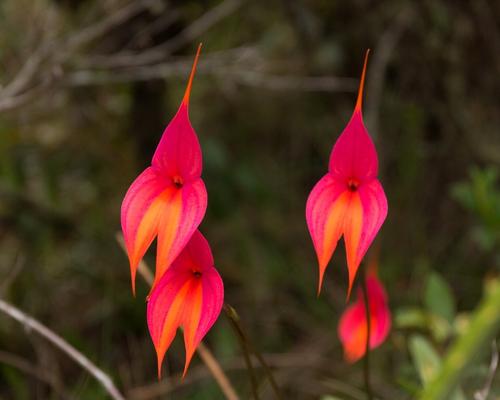 JANUARY
JANUARY
 FEBUARY
FEBUARY
 MARCH
MARCH
 APRIL
APRIL
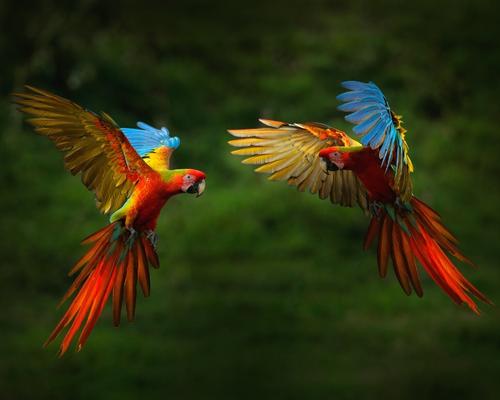 MAY
MAY
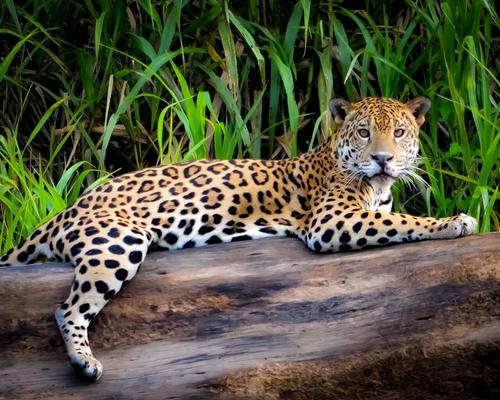 JUNE
JUNE
 JULY
JULY
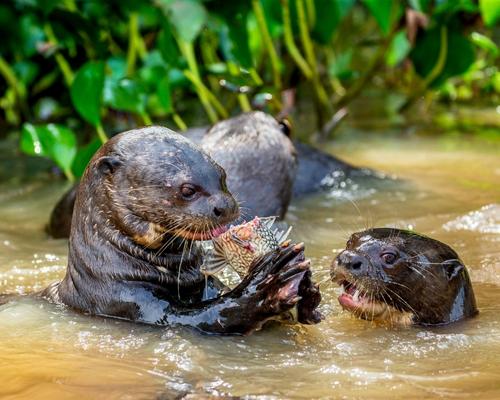 AUGUST
AUGUST
 SEPTEMBER
SEPTEMBER
 OCTOBER
OCTOBER
 NOVEMBER
NOVEMBER
 DECEMBER
DECEMBER
To book this tour, a minimum of $ 690 USD per person is required, the remaining balance will be paid upon arrival in Peru, at the Cusco office.
Any other additional information, please coordinate with your travel agent.

Feel the restorative power of nature, relax your mind in a place full of energy and life, disconnect from the fast-paced frenzy of everyday life.

Vaccines recommended for travelers to the Amazon often include hepatitis A and B, typhoid, and yellow fever. Visit your doctor four to six weeks before your trip for the latest recommendations and requirements for your destination. You may be advised to start taking malaria pills around this time.
The US Center for Disease Control is an excellent resource for detailed information on preventing travel related illnesses.
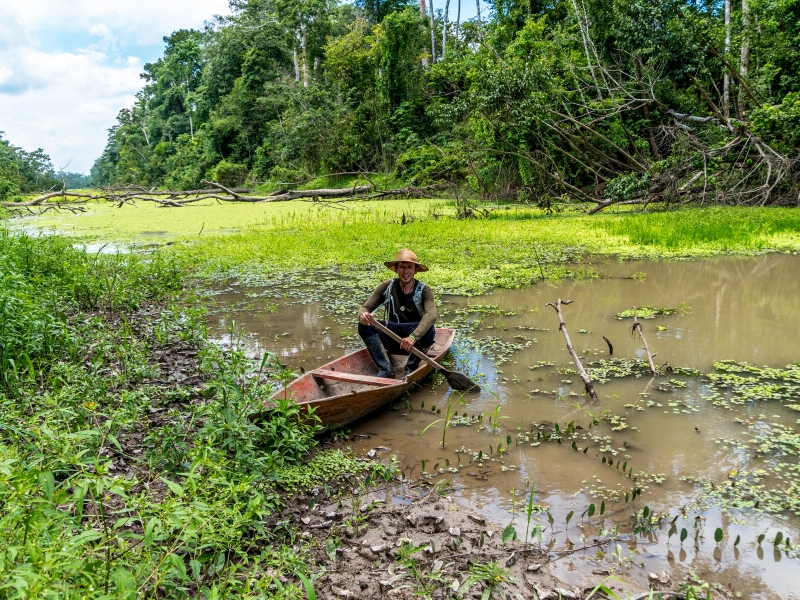
To stay safe in the Amazon, travelers should eat sensibly, dress appropriately and apply repellent to minimize the chance of getting bitten by mosquitos, and take the necessary vaccinations, medication and precautions as recommended by your doctor.
When hiking, canoeing, and enjoying other jungle activities you should always stay with your group and follow your guide’s advice. We also recommend that you leave valuable jewelry, watches and electronics at home, and where possible use a money belt and any room safes at your disposal to store passports and important documents.
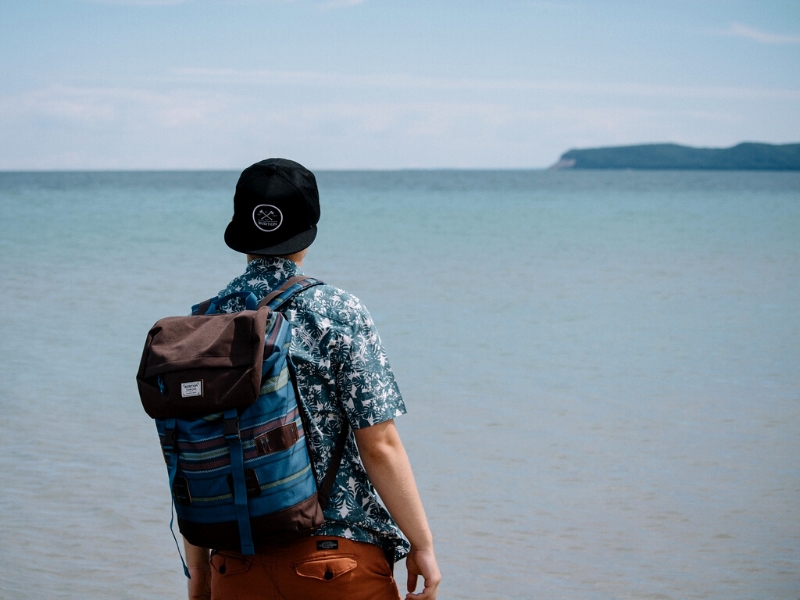
Bring comfortable walking shoes, light-weight long pants, and long-sleeved tops, a wide-brimmed hat, sunscreen, extra socks, mosquito repellent with DEET, bathing suits and of course, waterproof ponchos with hoods to protect against rain your camera, with charger and extra batteries on excursions. Binoculars are very important to enjoy the wildlife. Do not forget to include some items that you can give away to the locals (t-shirts, pens, and paper are especially prized, and perhaps some chocolates or candies for little kids). During meals in the dining room, we ask our guests to wear casual clothing and shoes. We provide rubber boots for wetland excursions and wet landings, and recommend taking comfortable walking shoes.

Travelers are strongly advised to purchase trip cancellation insurance which will reimburse the cost of air tickets and other non-refundable trip payments. International medical, baggage loss, and delay insurance are also recommended. Unfortunately, if you miss the Amazon tour because of a weather-related flight cancellation, we will not reimburse the cost of the reservation since flight cancellations are beyond our control and we have to comply with our schedules.
To enter the countries in the Amazon Rainforest, you will need a valid passport. However, visitors from most countries do not need a visa, provided their visit will be shorter than 90 days. If you plan to stay longer, you will need to request a visa in your home country.
Yes. The food is simply world class. Our guests enjoy a menu of fresh, delicious Peruvian fare (with a bit of continental influence). Breakfast, Lunch, Dinner each day promises to be a culinary feast for the senses, paired with select South American wines or perhaps a freshly pressed juice. If you have special dietary requests, please inform Andean Great Treks at the time of booking, or at least by 30 days prior to start the Amazon Tours, because some items may have to be ordered from local markets in advance. Every effort will be made to cater to special dietary needs and to accommodate special requests, subject to a given products’ availability in Peru.
Amazon wildlife is abundant, but you have to know where to look. Many creatures are weary of humans and often camouflaged. Our expert naturalist guides will help you spot and identify animals with their local knowledge, tracking experience, and remarkable eagle-eyesight and trained ears.
Many can even mimic bird and monkey calls to attract them! In general, the longer you spend in the region and deeper you can travel into the rainforest, the more chance of spotting wildlife you see. A decent set of binoculars will also go a long way to help.
Taking vitamin B12 is a more natural way to gain some resistance to mosquitoes. It can be ingested as vitamin pills or found in some foods with high levels of B12 such as shellfish (clams, oysters, mussels), fish, crustaceans (crabs), soy products (milk, tofu), bran cereals, red meat (lamb, beef), low fat milk, select cheeses, and eggs. We suggest taking B12 supplements around 2-3 weeks before arriving in Amazon Rainforest.
Yes. We warmly welcome families with children aged 7 or older. Our lodges are comfortable to receive families with their children. Additional accommodation for one child is available in some Lodges. Our naturalist guides are very friendly with kids and all of our staff will provide the necessary care for your family. We also have survivor jungle trails, piranha catch-and-release fishing experiences in Iquitos, and meal menus for kids.

Every Andean Great Treks holiday has been thoughtfully planned and crafted by our specialists. They draw on their own extensive travel experience and the guidance and expertise of our local partners to create superb holidays. Our specialists are committed to making every aspect smooth and enjoyable; they genuinely want to ensure that the holidays they create leave you with wonderful lasting memories.
Every Andean Great Treks traveller is accompanied by an experienced tour guide, you will be immersed in Historic cities, ancient ruins and unfamiliar landscapes are all brought to life by our carefully selected local guides. They want to share their expertise and help you make your own discoveries too; their sole mission is to ensure you enjoy every moment.
Giving you the freedom to make your holiday even more memorable. We know how much our customers look forward to their holiday and we pride ourselves on the choice and flexibility that we offer to enhance every aspect of your experience. Whether it’s getting to the airport, upgrading your room or booking an additional excursion, we can help.

Our guides are the stars of the show; it is their unrivalled knowledge, passion and expertise that will transform your tour experience from good to truly extraordinary!
Because the have grown up in the area and know it like the back of their hand, so they can help you experience whichever aspects most interest you. They’re passionate about sharing their corner of the world with you, and as you explore together, they’ll open your eyes to the intricate details, provide background to enhance your understanding of what you’re seeing, and share stories that will bring everything to life.

“Your inspiration for a trip can be a single word or a highly evolved outline, but it’s the conversations we have that help us understand the experience you’re looking for. Meanwhile, I’m looking back on the time I spent at the destination.
‘The great thing about working with a specialist at Andean Great Treks is how they take your complete jumble of ideas and turn them into something absolutely spectacular.’
As you begin to share your ideas with your specialist, it will connect them immediately back to a time in their own travels. Conjuring a picture of the rest time they made that same discovery, reminding them how it felt.
Your specialist understands that, when the journey is right, it has the power to excite your emotions in the most profound ways after all, that was the effect on them.
They carry a treasure box of moments, captured over many journeys, into every suggestion they’ll share with you, as they ask you how you want to feel on your trip.

EXPERIENCES THAT CALL TO YOU
It’s what you do in a destination that helps bring it to life. It’s why we strive to choose experiences that help you connect to a place, absorbing a little of its complex character. Wherever your passions lie, we’ll recommend experiences that speak to you, and we’ll recommend the guide or local expert who’s most qualified to help you explore. Packing your holiday full of special experiences means some early starts and long days, but you can be sure that you’ll return home with many incredible memories! Read our Tours and check the Physical Ratings to see if the pace and activity levels are right for you.

STAYS WITH DIFFERENCE
We know that where you stay is a cherished part of your travels. So, we go to great lengths to find places to stay that exceed expectations, or go above and beyond the ordinary, whether in their character, hospitality, or location. Over the years, we’ve discovered the very best properties, trying and testing them, so we can choose the right one for you. We’ve nourished long-standing relationships with these establishments and the people who founded them, and we’ve stayed there many times often, we’ll even know which rooms have the best views (and reserve them for you).
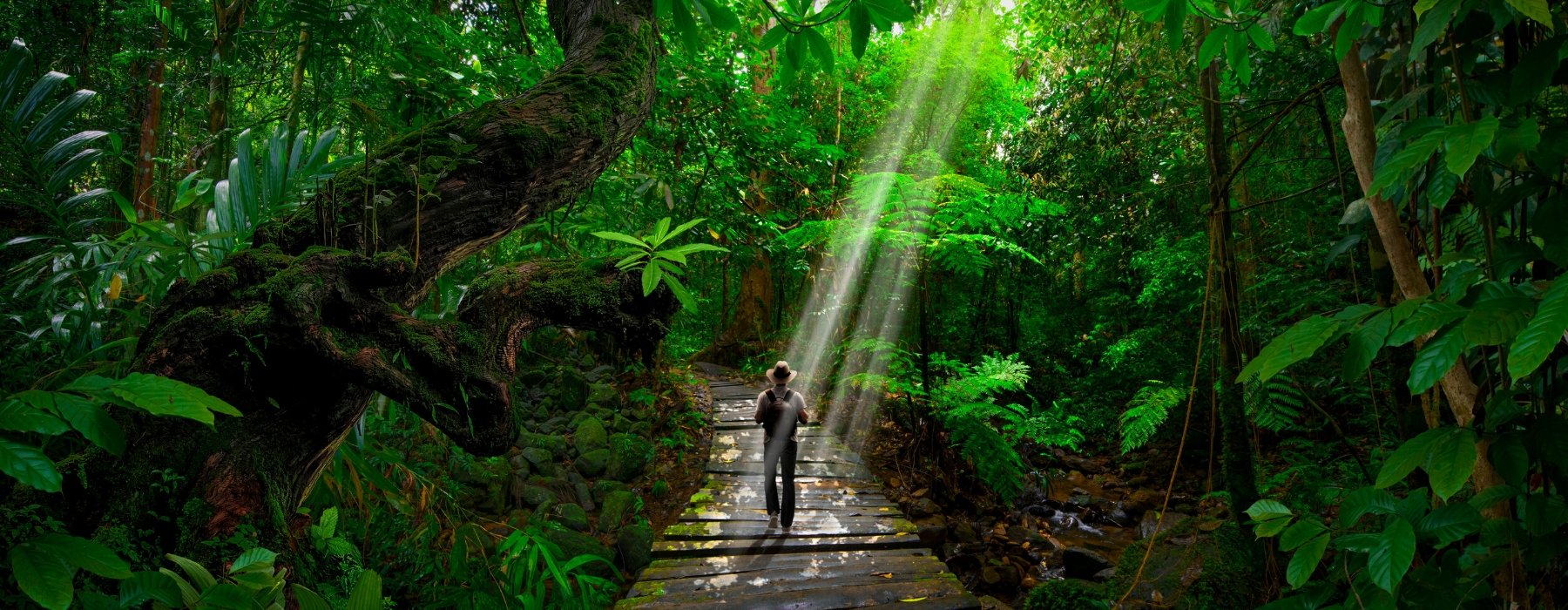
Our style of travel — authentic, thoughtful, and focused on building meaningful connections to the people and places you visit — is inherently respectful and considerate of the destinations we love. We design each aspect of your trip exactly as you want it, which includes its sustainability. That might mean choosing a train journey instead of a flight, staying at eco-friendly wildlife lodges, or opting for experiences that give back to the communities you’re visiting. The choice is yours.
Responsible travel has always been at the heart of what we do. First and foremost, because it gives you the best experience, but, also because it helps to preserve the communities and landscapes you visit. This isn’t new for us we collaborated with local communities and outside experts so we can grow to be better ambassadors.
The most authentic and interesting experiences often directly benefit the local people. We prefer to buy local products that are produced in the organic farms, we also have alliances with local artisan organizations who provide us with souvenir items for our clients, your money directly benefits the local economy.
Our style of travel — authentic, thoughtful, and focused on building meaningful connections to the people and places you visit — is inherently respectful and considerate of the destinations we love. We design each aspect of your trip exactly as you want it, which includes its sustainability. That might mean choosing a train journey instead of a flight, staying at eco-friendly wildlife lodges, or opting for experiences that give back to the communities you’re visiting. The choice is yours.
Responsible travel has always been at the heart of what we do. First and foremost, because it gives you the best experience, but, also because it helps to preserve the communities and landscapes you visit. This isn’t new for us we collaborated with local communities and outside experts so we can grow to be better ambassadors.
The most authentic and interesting experiences often directly benefit the local people. We prefer to buy local products that are produced in the organic farms, we also have alliances with local artisan organizations who provide us with souvenir items for our clients, your money directly benefits the local economy.
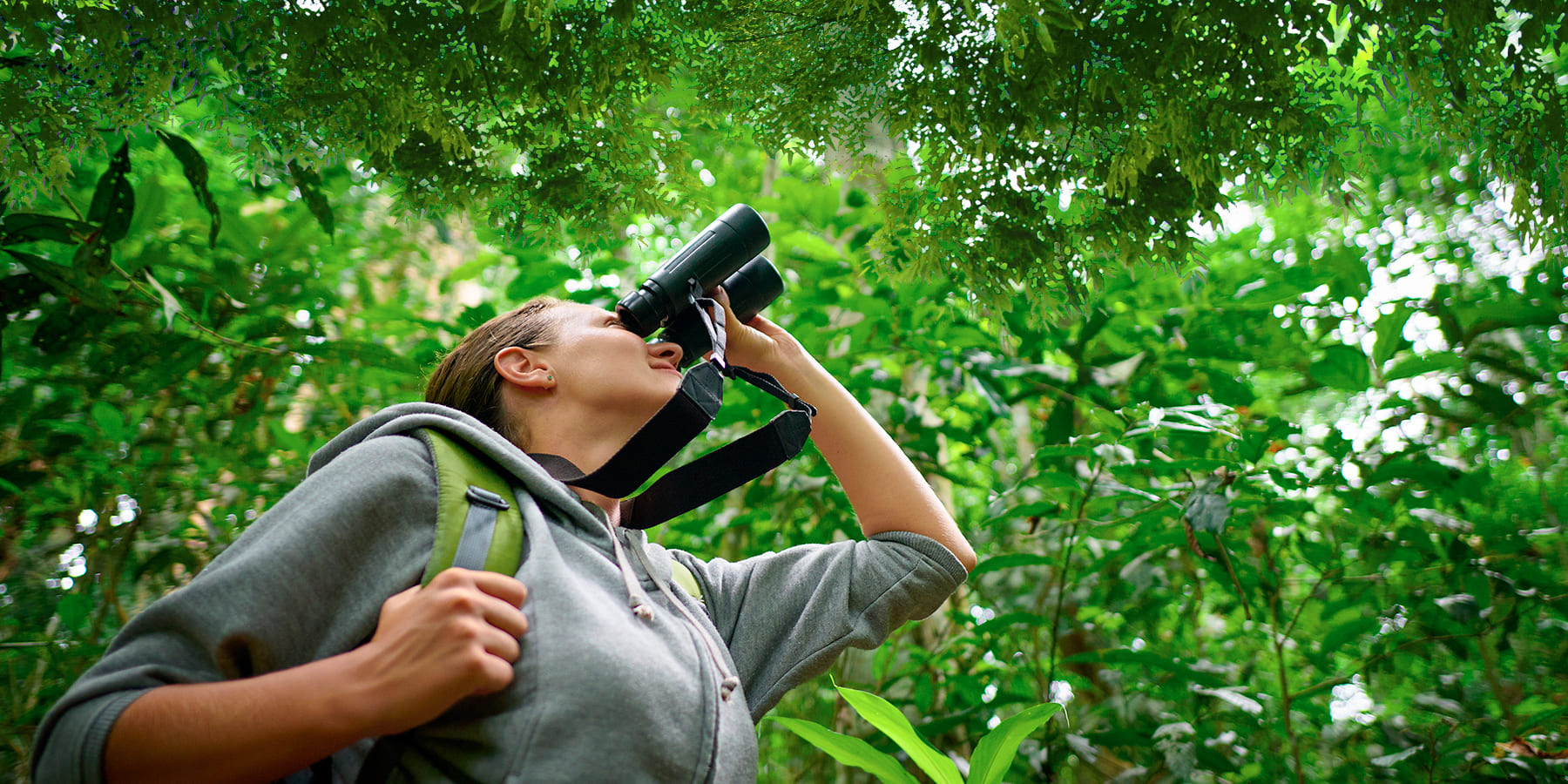
‘There’s a saying: we don’t inherit the Earth from our ancestors, we borrow it from our children. When we show you our country, this philosophy guides everything we do. It’s our responsibility to preserve the environment and wildlife, and support communities. That means using slower modes of transport, like cycling, employing local people, and working with communities who’ll benefit directly from your visit. This also gives you the best, most authentic impression of the places we want to share with you.
We prefer to buy local products in ecological bags, to avoid the use of plastic bags, likewise we teach the use of soaps and ecological products in each tour that we organize. We also work on reforestation projects with local communities who take care of landscape resources such as communal reserves, national parks.
‘There’s a saying: we don’t inherit the Earth from our ancestors, we borrow it from our children. When we show you our country, this philosophy guides everything we do. It’s our responsibility to preserve the environment and wildlife, and support communities. That means using slower modes of transport, like cycling, employing local people, and working with communities who’ll benefit directly from your visit. This also gives you the best, most authentic impression of the places we want to share with you.
We prefer to buy local products in ecological bags, to avoid the use of plastic bags, likewise we teach the use of soaps and ecological products in each tour that we organize. We also work on reforestation projects with local communities who take care of landscape resources such as communal reserves, national parks.
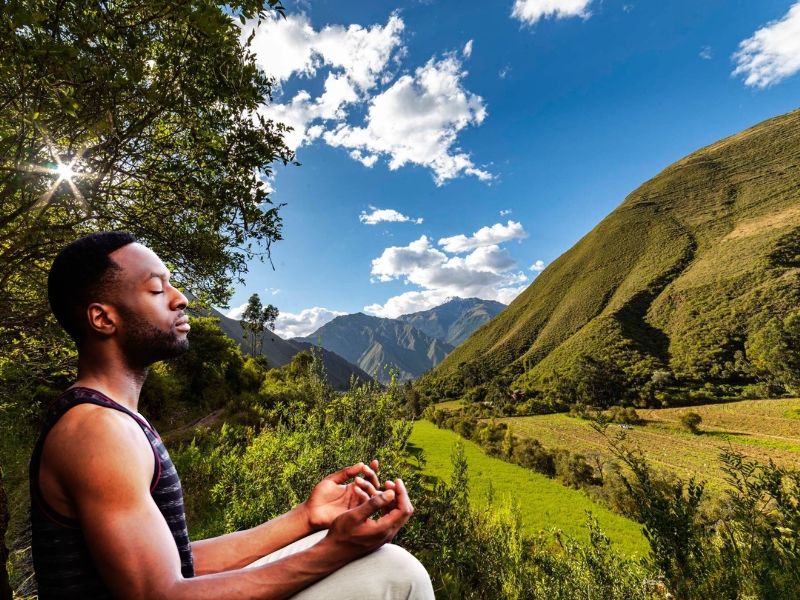
Taking part in this 5 days Ayahuasca Retreat you can participate in a deep process of healing, cleansing, purification; and physical, psychological and spiritual detoxification. This retreat includes 3 ayahuasca ceremonies in our retreat house, in the Sacred Valley of the Incas plus 2 Ancient Inca rituals, done by professional Masters and healers from the Amazon jungle and Andean Shamans.

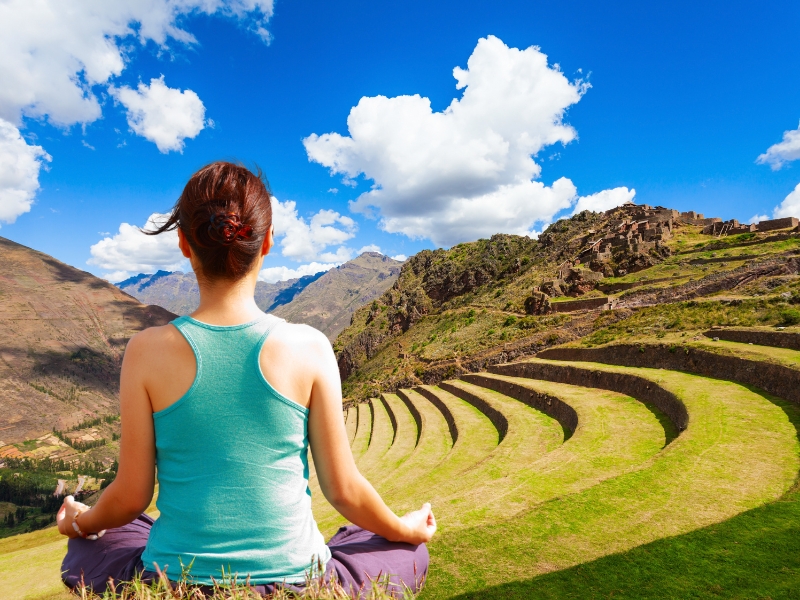
Our 3-day Ayahuasca program in the sacred valley is perfect for those who do not have much time available; but who seek to have a genuine and intense experience with their inner being and the energy that surrounds us. Make your Ayahuasca retreat; in a magical, immersive, safe, authentic and unforgettable place.


Discover the majestic Amazon rainforest of the Manu National Park. This protected area is in Peru, it is one of the largest ecosystems on the planet, due to its great diversity of birds, insects, plants and mammals.
